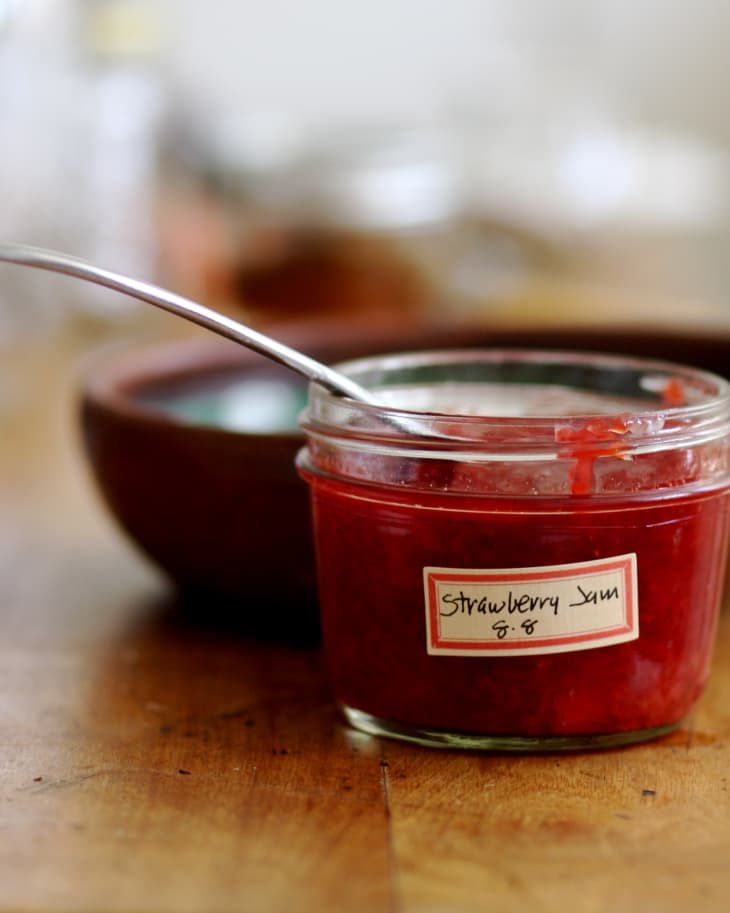Why Do You Have to Add Lemon Juice When Making Jam?
Besides the obvious fruit and sugar, most jam recipes also include lemon juice in the list of ingredients. That lemon juice isn’t just there for flavor; it actually plays a very important role. Here’s why we have to add lemon juice when we make jam.
It’s a Matter of pH
I know, I’ve said that before, haven’t I? But in food science, pH plays a key role, so it really is a matter of pH when you are making jam. In this case, we are referring to the pH of the jam and how that affects the “set,” or gelation. When you prep a big batch of jam, you begin by cutting the fruit and heating it with some sugar. This releases the pectin that was trapped inside the fruit cells into the jam mixture. Unfortunately, now that the pectin is dissolved and free, the strands of pectin repel each other because they carry an electric charge that is negative.
Without a little help, the pectin strands can’t come together to form a network that will set your batch of jam — that’s where the lemon juice comes into play. The lemon juice lowers the pH of the jam mixture, which also neutralizes those negative charges on the strands of pectin, so they can now assemble into a network that will “set” your jam. The optimal pH for pectin gelation is between pH 2.8 and 3.5 (a pH below 7 is acidic, while a pH above 7 is basic, and a pH of 7 is neutral). Of course, there are a few other factors involved in achieving the perfect set and getting pectin to gel properly, but pH is definitely key.
It’s Not Only About Pectin
There’s another reason why lemon juice is added to most jam recipes: for safe canning and to prevent the growth of bacteria. Bringing the pH level down means jars can be sealed in a regular boiling water bath in a reasonable amount of time (sometimes as little as 10 minutes). On the other hand, low-acid foods may have to be heated above 240ºF for roughly 100 minutes to sterilize the food.
The Case for Using Bottled Lemon Juice
Most canning sources will agree that the best source of lemon juice for canning is bottled lemon juice, as opposed to the juice of a fresh lemon. Lemons vary in ripeness and therefore the amount of acid might not be adequate for the jam to achieve the proper set. The best way to ensure you are adding enough acid is to go with a commercial bottled lemon juice because these are controlled and standardized, so the acid content is assured and more reliable. Some may also use powdered citric acid, which is another way of ensuring you are adding the right amount of acid to a recipe without having to worry about the variability of lemons.
